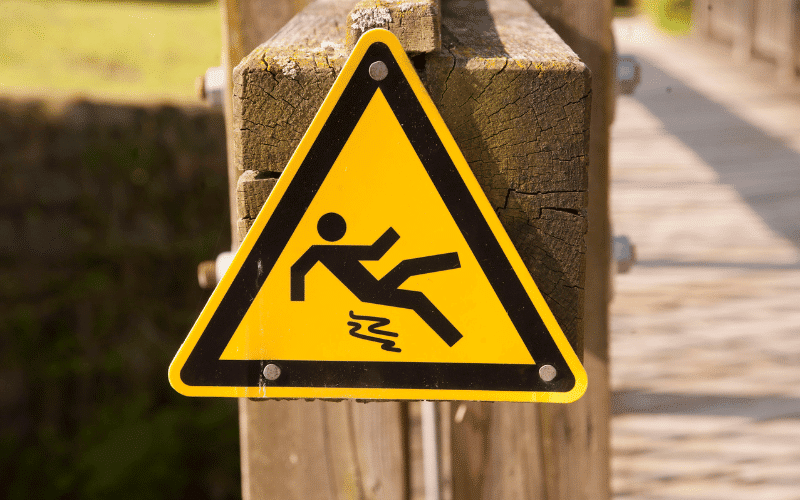Introduction
Welcome to our comprehensive guide on the prevention and treatment of common golf injuries.
Whether you're a professional golfer or a beginner, understanding the common injuries associated with this sport is crucial for maintaining a healthy and enjoyable experience on the course.
In this article, we will dive into the various types of golf injuries, their causes, prevention strategies, and effective treatment options.
By gaining insight into these aspects, you'll be better equipped to protect yourself from potential injuries and take proactive measures to stay at the top of your game.
Let's explore the world of golf injuries and learn how to keep them at bay.

Common Golf Injuries
1. Understanding Common Golf Injuries
Golf is a sport that demands precision, technique, and repetitive motion, making it susceptible to a range of common injuries that affect golfers of all levels.
Understanding these injuries is paramount for taking preventive measures and seeking appropriate treatment when necessary.
- Swing-Related Injuries
- Overuse Injuries
- Impact-Related Injuries
- Common Symptoms of Golf Injuries
- The Importance of Warm-Up and Cool Down
2. Types of Golf Injuries
Golf is a physically demanding sport that puts a significant amount of strain on various parts of the body.
As a result, golfers are susceptible to a range of injuries that can affect their game and overall well-being.
Some of the most common types of golf injuries include:
- Back Pain: Many golfers experience back pain due to the repetitive swinging motion and the strain placed on the back muscles.
- Elbow Injuries: The repetitive nature of golf swings can lead to elbow injuries, such as golfer's elbow and tennis elbow.
- Muscle Strains: Golf requires a combination of strength and flexibility, and muscle strains can occur when these are not in balance or when the muscles are overworked.
- Overuse Injuries: The repetitive nature of golf can result in overuse injuries, such as tendonitis, stress fractures, and strains.
These injuries can significantly impact a golfer's performance and overall well-being, underscoring the importance of recognizing and addressing them effectively.
It is crucial for golfers to be aware of the potential risks and take proactive steps to prevent and manage these injuries to ensure they can continue enjoying the sport they love.
3. Causes of Golf Injuries
- Poor Swing Techniques
- Overuse of Certain Muscle Groups
- Improper Warm-up Routines
- Inadequate Post-game Recovery
Golf injuries can be attributed to a variety of factors, and understanding the causes is essential for injury prevention.
Here are some detailed explanations of the causes of golf injuries:
- Poor Swing Techniques: When golfers have incorrect swing mechanics, they are susceptible to developing injuries in their shoulders, back, and wrists. For example, an improper swing can lead to strains in the back muscles and stress on the wrists, resulting in long-term injuries.
- Overuse of Certain Muscle Groups: Golf involves repetitive motion, which can lead to overuse injuries in specific muscle groups. For instance, the continuous swinging motion can strain the muscles of the upper body, leading to conditions such as tendinitis or muscle imbalances.
- Improper Warm-up Routines: Inadequate warm-up before a golf game can increase the risk of injuries. When the muscles are not properly prepared for activity, they are more susceptible to strains and tears during the swing motion, particularly in the shoulders and lower back.
- Inadequate Post-game Recovery: Failing to engage in proper post-game recovery techniques, such as stretching and cooling down, can contribute to the development of injuries. Without proper recovery, the muscles remain tense, increasing the likelihood of strains and fatigue-related injuries.
4. Preventing Golf Injuries
Preventing golf injuries involves a multifaceted approach, including regular stretching and strengthening exercises, proper swing mechanics, adequate rest and recovery, and utilizing appropriate golf equipment.
By adopting these preventive measures, golfers can minimize the likelihood of experiencing common golf-related injuries.
5. Treatment of Golf Injuries
When it comes to the treatment of golf injuries, a comprehensive approach is necessary to ensure proper healing and rehabilitation.
Here are some important aspects to consider:
- Rest and Immobilization: In cases of acute injuries, it is vital to allow the affected area to rest and recover. Immobilization techniques such as splints or braces may be recommended by a healthcare professional.
- Physical Therapy: Engaging in tailored physical therapy programs can aid in the restoration of strength, flexibility, and range of motion. These programs are often designed to address specific golf-related injuries and promote optimal recovery.
- Professional Medical Intervention: Certain injuries may require professional medical treatment, including medication, injections, or surgical procedures. Seeking timely intervention from qualified healthcare providers is crucial for managing severe or persistent golf injuries.
- Rehabilitation and Return to Play: Following the initial treatment phase, structured rehabilitation protocols are imperative to facilitate a safe and gradual return to golfing activities. Rehabilitation focuses on rebuilding strength, coordination, and endurance while minimizing the risk of re-injury.
It is essential to emphasize the importance of consulting with healthcare professionals to determine the most suitable treatment pathways based on individual circumstances and injury severity.
By addressing golf injuries proactively and effectively, individuals can regain confidence and performance on the course while promoting long-term musculoskeletal health.
Conclusion
As we conclude our exploration of common golf injuries, we recognize the significance of proactive injury prevention and informed treatment strategies.
Players at every level can enjoy the sport safely and sustainably by staying informed about the types, causes, and prevention methods for golf injuries.
Remember to prioritize proper warm-up, technique refinement, and recovery practices to keep common golf injuries at bay.
Here's to a fulfilling and injury-free golfing journey!
